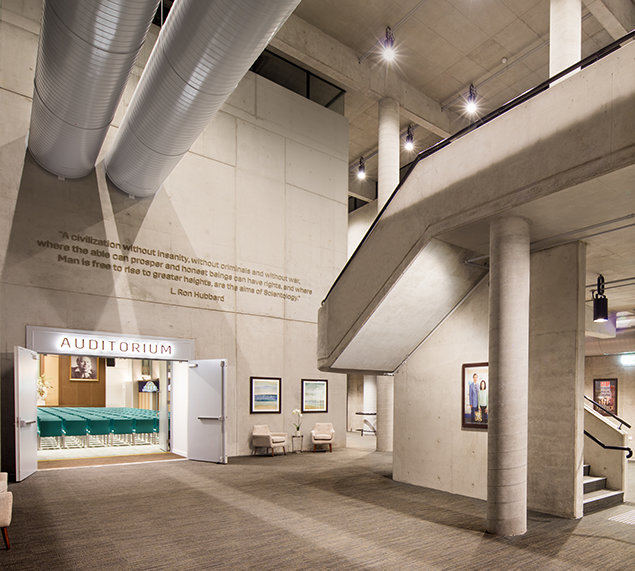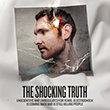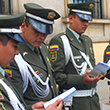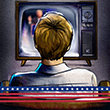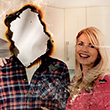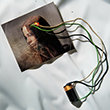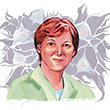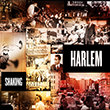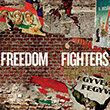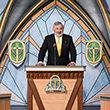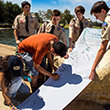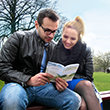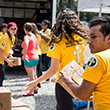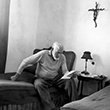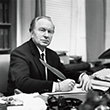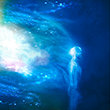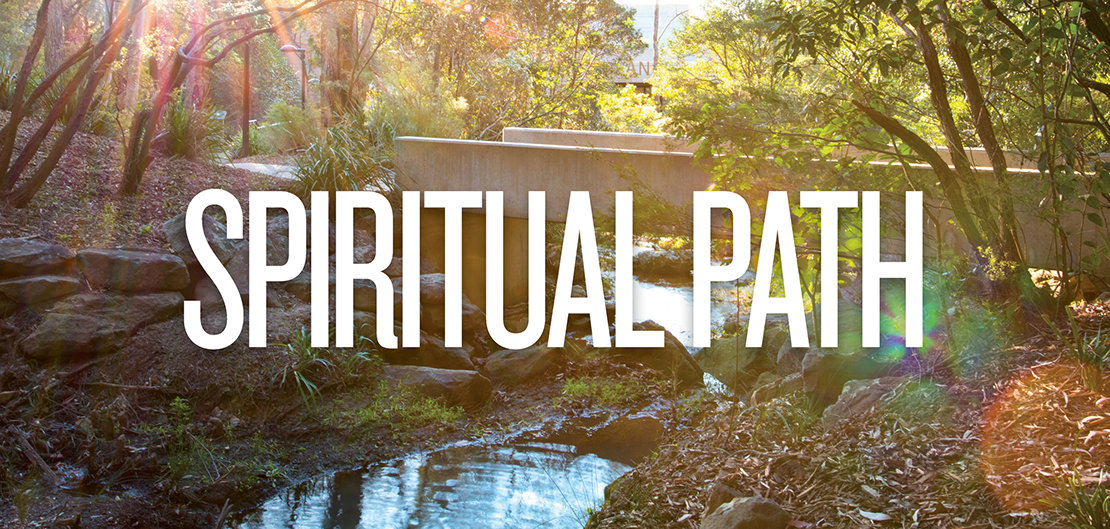It is dusk on the evening before the big event and within the massive new Church of Scientology Advanced Organization, last-minute touches are being addressed. The facility, home for advanced levels of spiritual counseling and training and the site of a new continental center for all Church operations and for Scientology’s humanitarian programs throughout Australasia and the Asia Pacific region, is almost ready.
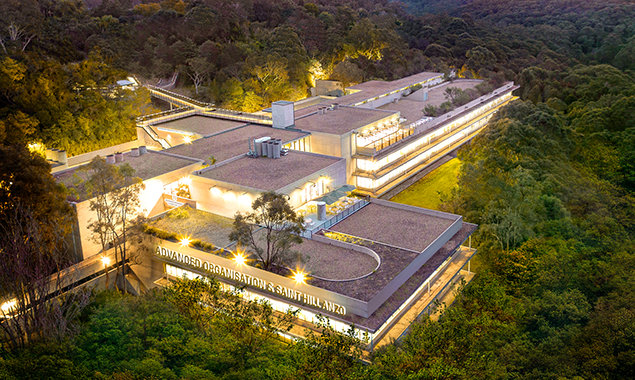
Flurries of activity are interspersed by sudden silence; in the auditorium two floors below, rehearsals are underway for Sunday’s speakers—a panel of distinguished human rights activists, lawyers, political figures and academicians. All had come to say a word about the opening, the Church itself, and what freedom of religion has come to mean for freedom itself in this land Down Under.
Outside the expansive reception area of the new Church organization’s main entrance, white lights resist the gathering dusk, so brightly that they hurt the eyes and fix hard shadows across row after row of folding chairs, placed in anticipation of the opening’s nearly 3,000 visitors and guests. But at this moment the stark light illuminates the work of technicians and others, doggedly testing and retesting circuits, positioning cameras, checking sound. Woven into this tapestry of light and movement is the ancient sound of cicadas, rising and falling in symphony among the golden wattle, eucalyptus and banksias trees that form the backdrop here from Lane Cove National Park, just adjacent.
Off the balcony of the new Lane Cove Cafe, just outside the glass walls of this pristine Advanced Ideal Org, as the sun is settling, a small flock of kookaburras come suddenly to a tree along Blue Gum Creek and join the evensong, adding their mischievous laugh-like trills. A Church staff member in his dark suit and tie turns, grins and raises his eyebrows.
“How about that, mate? Pretty cool, eh?”
What’s “cool” about all this—the new church, its state-of-the-art feel, and it’s poise and promise on the eve of its dedication, is something far broader and deeper than the moment; or even the moment to come the next afternoon as Scientology’s ecclesiastical leader, Mr. David Miscavige, released the symbolic ribbon, and the bright gold and green confetti rained onto the celebrants below. For here was a story not just about a grand opening but about what it took in belief, determination and commitment to freedom, over the years and against the odds, to make it reality.
After decades of struggles against religious bigotry, survival in the face of prejudice and opposition by a small but powerful clique of anti-religious forces, and the Church’s final victory before Australia’s highest court, establishing a definition of religion honored by nations around the world, the new structure has become a monument to freedom won.
For here was a story not just about a grand opening but about what it took in belief, determination and commitment to freedom, over the years and against the odds, to make it reality.
It stands now as the advanced spiritual and management center for the religion in the region, in perfect complement to other massive new Scientology Churches opened in Australia and East Asia in recent years—in Sydney, Melbourne, Tokyo and Kaohsiung, Taiwan—all in testament to the rapid growth of the Scientology religion in some of the most populated areas on Earth.
Nestled on a hillside, with more floors below ground than above, this concrete and glass structure that is the Church’s new home in Chatswood, an urban Sydney suburb, was originally built to house Australian government’s sound-testing laboratories. Its auditory protections include thick poured, rubber-lined concrete walls, contrasted with soaring glass overlooks; in its new setting, as a spiritual center serving Scientologists throughout the Asia Pacific region, it seems somehow foundational; rock solid and sustainable, exuding an immovable presence that echoes something else for Scientologists—a history of a long, difficult but successful fight to find solid ground on which to build this Church, reflecting a resolve that permeates its very presence today.
That resolve, and its spiritual expression in the Church’s human rights and humanitarian missions, were part of what led internationally known human rights activist Gracelyn Smallwood and other major figures in the community of Australia’s humanitarian conscience to accept invitations to speak at the impending dedication ceremony.
As the kookaburras raised their song, Dr. Smallwood and that illustrious panel met for rehearsals. They were already well known to each other, and to Scientology. Among them: Dr. David Bennett, the former Australian Solicitor General who later argued the high court case that won for Scientologists religious recognition in Australia; Dr. Amin Hady, former religious affairs advisor to the prime minister of Australia, and a human rights leader throughout Indonesia; Dr. Keith Thompson, Associate Dean of Australia’s University of Notre Dame Law School, himself a tireless advocate of interfaith cooperation and tolerance.
As Dr. Smallwood was reviewing her speech for those rehearsals, she was also contemplating remarks she would make the following morning on a live national broadcast on ABC news radio. Speaking as a guest commentator about protest riots over the weekend at Kalgoorlie in Western Australia, she analyzed the reaction to tepid police response over the killing of an aboriginal teenager in a racially-tinged incident.
.jpg)
During the broadcast, she noted the frustration of those who wait for social justice, and remarked on other groups that have known such concerns, a trail that Australia’s Scientologists themselves came to know in their own bid to spread a message of religious tolerance and respect for their faith—in the face of legislated discrimination that suppressed expansion for decades.
“I’m actually speaking in front of 3,000 people today in a couple of hours’ time in Sydney at the opening of a Scientology building,” she told the network’s radio audience of some 18 million. “I’m not a Scientologist, but if Scientologists are giving black Australian activists a short speech on the truth of this country … then, yes, by whatever means necessary,” she said, she’ll be glad to support the Church.
In an interview earlier in the afternoon before rehearsals, Professor Smallwood told Freedom she felt her real role, as one of the nation’s First Australians, was to “welcome” the Church and its new continental headquarters to Australia. She was fully aware, she said, from her years of serving in the academic and medical communities of Australia and the region, of the importance of the humanitarian and social justice work the Church has done. She sees this new Church as an important point of transition for the spiritual journeys of its members, and expanding its outreach on humanitarian goals.
Early the next afternoon, as the crowd found its feet and the last echoes from the deep-base didgeridoo faded across the parkland, Dr. Smallwood took the stage. Once refused citizenship in her own country and denied access to her ancestral language, she was an injured veteran of social justice protests who went on to be honored with the Order of Australia, recognized by the United Nations, and leaders like Nelson Mandela—she extended the welcome of her ancient ancestors to the new Advanced Organization & Saint Hill Australia New Zealand Oceania—AOSH ANZO.
“The traditional custodians of this land have a strong tradition of respect and spirituality,” she said. “I have learned how you honor our tradition with your aims of a world without insanity, without criminals and without war, where the able can prosper and honest beings can have rights. Here today we welcome you and your own tradition of respect and understanding of man as a spiritual being. And we welcome you from many lands, from across the vast Pacific and our own Australia.”
.jpg)
A PLACE IN TIME
While audience members, some carrying small flags of their home nations, assembled that Sunday morning under bright blue skies, the speakers assembled separately in a conference room. The necessary things were unfolding: stage makeup, quick reviews of speeches, a last, quick rehearsal in front of the cameras, and then convivial chatter among the speakers around the table, the door closed, comparing notes, and recollections about their common work.
Dr. Bennett suggested that his speech had been shortened for time—and offered his original. A member of the new Church leaned in and asked him a question, then offered, “if it wasn’t for this man here, none of us would be here today.”
Dr. Bennett waived a dismissive hand but Dr. Thompson nodded in agreement, a wry grin his disclaimer. The Supreme Court’s decision in Melbourne in 1983, finding that Scientology was a “religious institution” with the same tax-exempt status as any recognized religion—the case Bennett built by dissecting Scientology’s spiritual purposes to make his argument—established legal precedents that led to similar rulings internationally, and particularly in the United Kingdom.
“Fairly rare for an Australian case to set precedent for the Brits,” the barrister finely indicated. And his small audience murmured.
Minutes later they were all ushered to the auditorium downstairs for photos, where Mr. Miscavige greeted them, trading handshakes and hugs. They posed and joked as the cameras clicked and then made their way back to the reception doors. Just outside, the gathering of attendees had come to life, and the opening was underway.
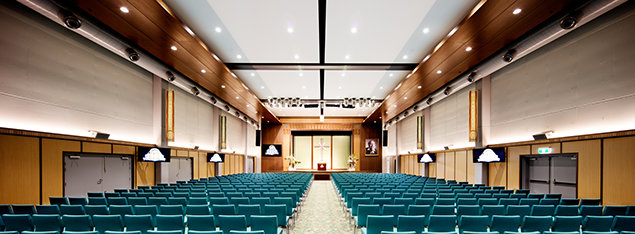
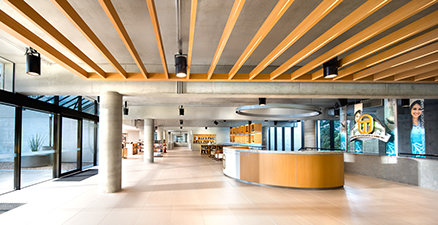
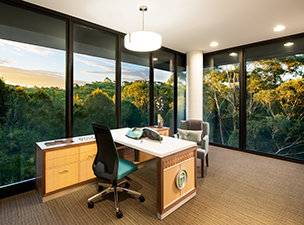
The didgeridoo’s ancient tones hummed, the ancestral dress added color and the music of Australia cascaded over the audience. One by one the speakers followed introductions, stopping by the glass doors before stepping out from the wings, sharing one more word with Scientology’s Chairman, who repeatedly reassured them of the steady applause.
“Your Founder, L. Ron Hubbard said, ‘Religion is the first sense of community,’” Dr. Keith Thompson began. “In that respect he was prescient. He understood that in an interfaith community, if we aren’t talking to each other, we will have far more people become ‘the other.’
“Religion is as old as time itself,” he said, taking note of the Church’s humanitarian missions. “And religion’s importance is beyond measure. It keeps together the fabric of society when other systems are failing. Religion bestows a sense of duty to answer calls of need. We will always have need. And to that end, the Church reaches out and provides, if you will, a port in the storm. … They show a way for a person to grow and become more than they are … learning the infinite worth and capability of any individual.”
Dr. Hady, who has praised the Church’s social betterment and human rights efforts throughout the region, noted that he had come to Scientology on his own initiative to learn more about the Church because of its reputation for addressing social ills.
“I have come to realize that there is a fallacy at the core of society, that the main actors of democracy are not a handful of people in the palace,” he said. “The responsibility for change lies with you and me, every citizen. Because only by inspiring individuals to transform from spectators into participants can we win the society we wish for [and] … today we celebrate a continental center from which that transformation can become reality.”
The cameras were turning, the crowd was applauding, and the Chairman took the stage and began to outline the meaning of this newest, and largest church outside the United States, and listed its amenities, ticking off its size, that of two football fields, its welcome by local and federal officials, its proximity and reach into the Asia Pacific region through a brand new office to coordinate activities from Australia through Southern Asia.
“What about terrestrial expansion across the rest of this continental zone?” Mr. Miscavige asked. “Well, the answer lies in what else now lives within those walls. Namely, your new Continental Liaison Office.
“So now we come to the never-ending vantage point on this day. It’s the one that follows from a vision of humanity gravitating toward our doors … to the realm of spiritual freedom.”
And with that—and a pull of a ribbon—the doors opened.
